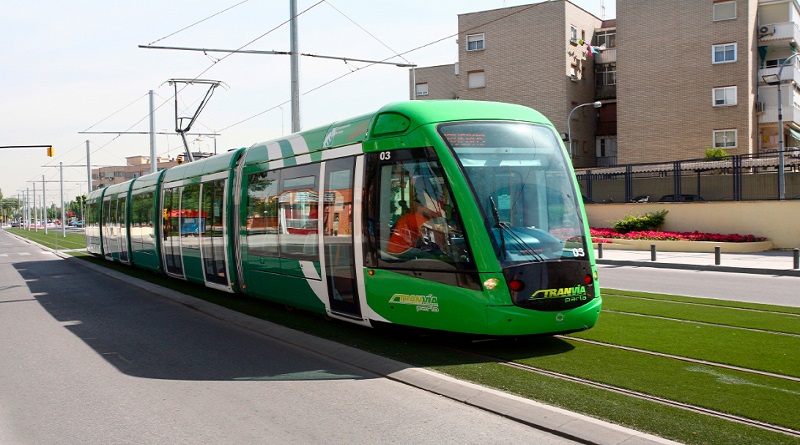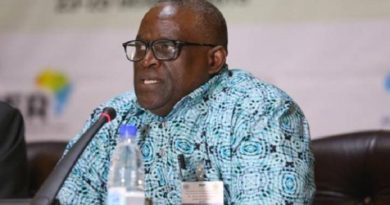Green Climate Fund energy strategy accelerates low-carbon transition
The Green Climate Fund (GCF) has set out how its energy strategy will support new COP29 pledges to accelerate the low-carbon transition, marking Energy Day at COP29.
GCF has already committed over USD 4.7 billion for clean energy and energy efficiency, leveraging USD 18.25 billion in co-financing. Over the four years from 2024-2027, GCF will support up to 30 countries to expand their access to renewable energy. During the same period, GCF will support up to 25 countries in shifting towards clean and efficient energy for transport, building, and industry.
Today GCF has expressed its support for the COP29 Global Energy Storage and Grids Pledge, the COP29 Green Energy Zones and Corridors Pledge, and the COP29 Hydrogen Declaration, recognizing their importance in advancing global efforts to triple renewable energy generation and double the rate of energy efficiency by 2030—goals that are fully in line with GCF’s strategic plan and the 50 by 2030 vision established by Mafalda Duarte, GCF Executive Director.
Developing countries need support to improve their grids through upgrading, climate proofing, and incorporating flexibility and storage so that power grids can more efficiently and reliably operate with higher shares of renewables. They also need to access innovations such as green hydrogen to decarbonize their economies.
GCF will support the energy pledges in developing countries through its investments in low-emission, climate-resilient grid infrastructure technology. GCF supports transformational grid planning through its readiness support to countries. It catalyses innovation for electricity grids, including by supporting new contracting models and public-private partnerships. GCF mobilises investments at scale, including by taking anchor investment positions in early deployment of new scalable technologies, and by investing in energy storage projects, including green hydrogen, where there are market gaps. It also plays a key role in knowledge sharing through communities of practice, promoting best practices, and supporting the development of climate impact ex-ante estimation tools for power grids.
Projects such as the Mali solar rural electrification project, in partnership with the West African Development Bank (BOAD), demonstrate how GCF’s support can drive the transformation towards clean energy in developing countries, in this case by installing mini-grids in 70 localities, supporting capacity building for operation and maintenance, and providing micro-finance for the productive use of electricity.
Other investments, such as the Kazakhstan Renewables Framework, in partnership with the European Bank for Reconstruction and Development (EBRD), demonstrate how GCF can invest concessional capital in renewable generation while also providing technical assistance grants for developing national modalities for cost-efficient power procurement through auctions and facilitating renewable energy integration within the grid.
GCF’s investment in the Renewstable Barbados Project with the International Finance Corporation (IFC) is pioneering the use of battery storage and green hydrogen to create 24/7 dispatchable solar power, aiding the island in reaching its net zero target.
Speaking during Energy Day, Mafalda Duarte stated, ‘Our energy investments are making a difference—from connecting sub-Saharan Africa’s underserved regions to clean energy, to climate-proofing power grids in the Caribbean, and expanding solar rooftops across India. We’re on track to prevent up to 2.4 gigatons of CO₂ emissions and expand access to clean energy in 30 developing countries. And we want to do more with a larger envelope of resources, but crucially, one that is delivered more efficiently and with greater impact.’
As the largest multilateral climate fund, GCF plays a unique role in delivering climate finance that creates markets and catalyzes both public and private investments. GCF continues to be at the forefront of mobilizing investment in clean energy economies across the developing world, fostering enabling environments for investment, infrastructure, and capacity building.
GCF’s investments are country-led and prioritize solutions that are paradigm-shifting and tailored to each country’s needs. These solutions are designed to offer the most cost-effective pathways to clean energy transition, promoting the Just Transition; efficient & clean productive use of energy, especially for water, food and health security; leveraging private capital; and stringent environmental and social safeguards, mainstreaming gender and Indigenous Peoples considerations, while ensuring that GCF investments do not inadvertently scale up or extend the life of fossil fuel-based energy systems. This approach makes GCF resources a catalytic force, delivering tangible climate benefits.
The Global Energy Storage and Grids Pledge promotes investment in energy storage and modern grid infrastructure to support high levels of renewable energy integration. The Green Energy Zones and Corridors Pledge promotes green energy zones and long-distance HVDC transmission lines to utilize renewable energy resource rich sites. And the COP29 Hydrogen Declaration targets the potential for de-carbonising hard-to-abate sectors through the use of green hydrogen and its derivatives.
The Green Climate Fund (GCF) is the world’s largest dedicated climate fund. GCF’s mandate is to foster a paradigm shift towards low emission, climate-resilient development pathways in developing countries. GCF has a portfolio of USD 16 billion -(USD 61.5 billion including co-financing) delivering transformative climate action in more than 130 countries. It also has a readiness support programme that builds capacity and helps countries develop long-term plans to fight climate change. GCF is an operating entity of the financial mechanism of the United Nations Framework Convention on Climate Change (UNFCCC), and serves the 2015 Paris Agreement, supporting the goal of keeping average global temperature rise well below 2°C.




